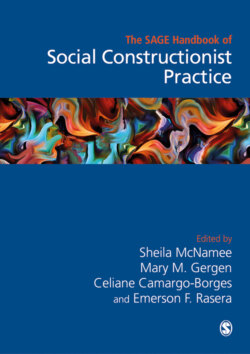Читать книгу The Sage Handbook of Social Constructionist Practice - Группа авторов - Страница 48
На сайте Литреса книга снята с продажи.
Photovoice
ОглавлениеPhotovoice is a method where participants are supported to produce their own photographic work in order to help them to understand, define and communicate in images and stories about the issues that are affecting them (as the Mapplethorpe example above achieved). Through photographs a variety of perspectives emerge, thereby adding complexity to a topic as opposed to teasing out the singular answer.
In 2014 a photovoice research project called ‘Discovering the Beauty of Uganda’ was developed in Entebbe, Uganda, with two local partners: Hope for Youth Uganda and Health Nest Uganda (Camargo-Borges, 2018b). The goal was to engage in an exploration of the community through the youth's positive experiences and impressions of Uganda. The researchers first introduced participants to the Photovoice method (Griebling et al., 2013) and trained them in the context of the research topic. Participants were prompted to take photos of something that was meaningful to them, that had a meaningful story or represented an important experience in their lives.
The data collection unfolded, as the participants were absorbed with the topic, the method, and co-created meaning together. Digital cameras were given to around 20 young people, aged 8 to 26. They moved around the city and took pictures of what they saw/interpreted as the beauty of Uganda. The method of photographing enabled and encouraged participants to be creative and reflect on the topic. With their cameras, participants were able to explore locations, documenting and revealing what they appreciated about Uganda and what they wanted to share.
During the data collection, participants were actually generating (creating) data. The participants–method–team interaction promoted the emergence of new ideas and material with which the researchers and participants worked afterwards. The arts-based method used here involved all participants in the research, enabling them to tap into their creativity and inviting interaction among themselves as well as with the researchers and their own city, promoting a sense of ownership with their locality (Camargo-Borges, 2018a).
The next phase was to collect all the pictures taken. The participants sat together in small groups and told the stories their photos portrayed. Their stories became richer as they shared them with each other. After choosing some pictures to be printed, they managed to find shared meanings and also find what was special about their own experiences and stories. The research project ended with a final public exhibition in the community park of the pictures together with the stories written. By sharing the pictures and stories with community members and leaders, their meanings were further extended, and new stories emerged from the interaction.
‘Discovering the Beauty of Uganda’ shows the potential that arts-based research can bring to innovate by using arts, visual arts and narrative to develop shared and coordinated meanings. Young people from two villages developed stories from their experiences in Uganda. They invited people from the community to visit their Photovoice exhibit. The wider community could better understand the experiences of the young people, and could also, in turn, share their own experiences about Uganda. These shared stories began a rich weaving of meaning and a strengthening of relationships.
According to Patricia Leavy:
Arts-based research (ABR) was developed in a transdisciplinary context and merges scientific and artistic ways of knowing. ABR practices have posed serious challenges to methods conventions, thus unsettling many assumptions about what constitutes research and knowledge. With the tools of ABR, we are able to ask a host of new questions and to ask old questions in new ways. ABR researchers tap into a range of skills, both scientific and artistic – such as thinking metaphorically, symbolically, and thematically. (Leavy, personal communication, October 21, 2019)
